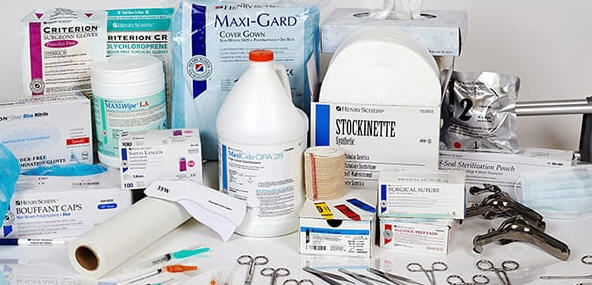
Key Performance Indicator (KPI) for Medical Supply
To name a few:
KPIs will depend on your specific business model: manufacturer, distributor, or retailer of medical equipment and supplies.
Sales and Growth KPIs
- Total Revenue: Total sales generated during a specific period. This is your top-line sales metric.
- Sales Growth: Increase in revenue over time. Are your sales expanding or contracting?
- Average Order Value (AOV): Average amount spent per customer order. Increasing AOV drives more revenue.
- Customer Lifetime Value (CLV): Projected total revenue a customer generates over their relationship with your business.
- New Customer Acquisition: Number of new customers acquired during a given period. Helps track growth.
Customer-Focused KPIs
- Customer Satisfaction Surveys (CSAT): Measure satisfaction with product quality, pricing, availability, ordering process, customer service, etc.
- Net Promoter Score (NPS): Tracks the likelihood of a customer recommending your products and services. Indicates customer loyalty.
- Repeat Customers: Percentage of customers who make multiple purchases. Builds a loyal customer base and repeat sales.
- Backorder Rate: Percentage of orders that cannot be fulfilled immediately due to insufficient stock. Lower is better to avoid frustrating customers.
Inventory & Supply Chain KPIs
- Inventory Turnover Ratio: How frequently inventory is sold and replenished over a period. High turnover often indicates healthy demand and efficient management.
- Days Inventory Outstanding (DIO): Average number of days inventory is held before being sold. Shorter DIO indicates better cash flow.
- Stockouts: Instances where demand cannot be met due to a lack of product availability. Lost sales and frustrated customers.
- On-Time Delivery (OTD): Percentage of orders shipped and delivered on schedule. Reliability is vital for medical customers.
- Expired Inventory: Track the amount of inventory that expires before it can be sold, often a critical issue for medical supplies.
Financial KPIs
- Gross Profit Margin: Percentage of revenue remaining after direct costs of goods sold (COGS) are accounted for.
- Net Profit Margin: Percentage of revenue remaining after all expenses are accounted for. Measures overall profitability.
- Days Sales Outstanding (DSO): Average time it takes to collect payment from customers. Lower DSO improves cash flow.
- Cost of Goods Sold (COGS): Direct costs associated with the medical supplies you sell. Managing COGS is key to profitability.
Product-Focused KPIs
- Sales by Product Category: Track sales for different medical supply categories (disposables, durable equipment, etc.). Helps you optimize inventory and promotions.
- Product Margins: Analyze profit margins for different product lines.
Additional Considerations
- Regulatory Compliance: Ensure you adhere to all industry regulations regarding product safety, quality, and record-keeping.
- Reimbursement KPIs: If you work with healthcare providers, track reimbursement rates and billing accuracy for insurance claims. Affects cash flow.
